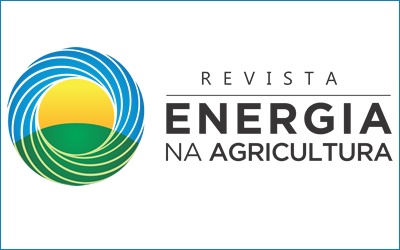INFLUÊNCIA DO AMBIENTE PROTEGIDO NO CULTIVO DA ALFACE EM ADUBAÇÃO ORGÂNICA E CONVENCIONAL
DOI:
https://doi.org/10.17224/EnergAgric.2022v37n1p76-84Resumo
INFLUÊNCIA DO AMBIENTE PROTEGIDO NO CULTIVO DA ALFACE EM ADUBAÇÃO ORGÂNICA E CONVENCIONAL
ALMIR ROGÉRIO COVOLAN1, TATIANE CRISTOVAM FERREIRA2, EDILSON RAMOS GOMES3
1 Discente do curso de Agronomia - FIB - Faculdades Integradas de Bauru – FIB; Rua José Santiago, Quadra 15, Bauru -SP, 17056-120. almir.covolan@hotmail.com.
2 Doutoranda em Engenharia Agricola: Faculdade de Ciências Agronômicas – FCA/UNESP, Avenida Universitária, 3780, Botucatu-SP, 18610-034. tatiane.cristovam@unesp.br.
3 Professor Doutor do Curso de Agronomia - FIB - Faculdades Integradas de Bauru – FIB: Rua José Santiago, Quadra 15, Bauru -SP, 17056-120. edilsonevj@hotmail.com.
RESUMO: O consumo de hortaliças no Brasil aumenta ano após ano, com ênfase nas folhosas. Assim, os aspectos climáticos estão entre os fatores que mais interferem em sua produção, bem como alterações na fisiologia da planta. Portanto, o objetivo do presente trabalho foi avaliar o efeito de diferentes tipos de ambientes protegidos em resposta a adubação mineral e orgânica na produção da alface crespa. O experimento foi conduzido na forma de um delineamento inteiramente casualizado (DIC), no esquema fatorial 3 x 2, onde os tratamentos foram T1: cultivo em ambiente com tela de sombreamento na cor preta com 50% sombreamento com adubação mineral e a orgânica; T2: cultivo em campo aberto com adubação mineral e a orgânica e T3: cultivo em ambiente em forma de túnel com cobertura de polietileno de 125 micras com adubação mineral e a orgânica. Na subparcela dois tipos de adubação (mineral e orgânica) com cinco repetições. As características coletadas foram: massa fresca e seca de parte aérea, caule e raiz, altura de planta, diâmetro de caule, volume de raiz, número de folhas, teores de macronutrientes foliar e produtividade. Pode-se concluir que os melhores resultados foram obtidos no ambiente de cultivo em túnel com cobertura de polietileno de 125 micras combinado com a adubação orgânica.
Palavras-chaves: nutrição de plantas, Lactuca sativa L., cultivo protegido.
THE INFLUENCE OF THE PROTECTED AMBIENT ON LETTUCE CULTIVATION UNDER ORGANIC AND CONVENTIONAL FERTILIZATION
ABSTRACT: The consumption of vegetables in Brazil increases year after year, with emphasis on leafy vegetables. Thus, climatic aspects are among the factors that most interfere with its production, as well as changes in the physiology of the plant. Therefore, the objective of the present work was to evaluate the effect of different types of protected environments in response to mineral and organic fertilization on the production of curly lettuce. The experiment was carried out in a completely randomized design (DIC), in a 3 x 2 factorial scheme, where the treatments were T1: cultivation in an environment with a black shading screen with 50% shading with mineral and organic fertilizers; T2: cultivation in open field with mineral and organic fertilization and T3: cultivation in a tunnel-shaped environment with 125 micron polyethylene cover with mineral and organic fertilization. In the subplot two types of fertilization (mineral and organic) with five replications. The characteristics collected were: fresh and dry mass of aerial part, stem and root, plant height, stem diameter, root volume, number of leaves, foliar macronutrient contents and productivity. It can be concluded that the best results were obtained in the tunnel culture environment with a polyethylene cover of 125 microns combined with organic fertilization.
Keywords: crop nutrition, Lactuca sativa L., protected cultivation.
Publicado
Como Citar
Edição
Seção
Licença
Copyright (c) 2023 ENERGIA NA AGRICULTURA

Este trabalho está licenciado sob uma licença Creative Commons Attribution-NonCommercial-NoDerivatives 4.0 International License.
Esta revista proporciona acesso publico a todo seu conteúdo, seguindo o princípio que tornar gratuito o acesso a pesquisas gera um maior intercâmbio global de conhecimento. Tal acesso está associado a um crescimento da leitura e citação do trabalho de um autor. Para maiores informações sobre esta abordagem, visite Public Knowledge Project, projeto que desenvolveu este sistema para melhorar a qualidade acadêmica e pública da pesquisa, distribuindo o OJS assim como outros software de apoio ao sistema de publicação de acesso público a fontes acadêmicas.





